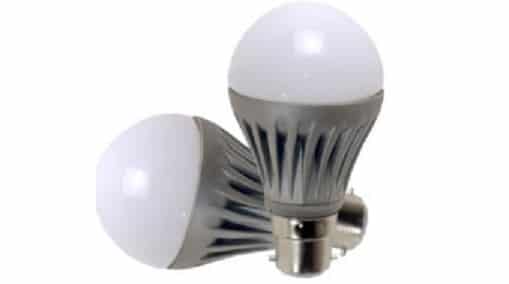Friends, today we will show you a way to prepare LED bulbs at home. You do not know that the bulbs available in the market are very expensive. But you can make it at home without any training.

How To Make LED Bulbs At Home On Minimum Costing
What You Need:
- Pint glass canning jar with lid
- 3 feet insulated copper wire
- 6-volt battery
- Thin iron wire (unraveled picture hanging wire works great)
Step 1: Cut the copper wire in half and strip at least one inch of insulation off the ends of each length of wire. Next, punch two holes in the jar lid. Thread one end of the wire through each hole in the lid.
Step 2: Make a hook at the end of each wire. Twist two or three strands of the iron wire together, then twist the ends around the hooks in the copper wire. The iron wire will act as your filament.
Step 3: Place the lid in the jar and carefully connect the free ends of the copper wire to the terminals on the 6-volt battery. Once both ends are connected to the battery, the current should start flowing, causing the filament to heat up and give off a bright orange glow.
Now your homemade light bulb is working.
Benefits of LED lighting
Efficiency
LEDs are extremely energy efficient and consume up to 90% less power than incandescent bulbs. Because of the low power usage of LEDs, they are becoming extremely popular for light sources in remote areas that use solar panels.
Longevity
LEDs have a lifespan of up to 60,000 hours compared to 1,500 hours for incandescent bulbs. An LED light will last over 7 years (constant use) before needing replacement. On average, LED bulbs last 10 times as long as compact fluorescent bulbs, and 133 times longer than typical incandescent bulbs.
LED lifespan scenarios:
– 50,000 hours powered 4 hours/day = 34 year lifespan
– 50,000 hours powered 8 hours/day = 17 year lifespan
– 50,000 hours powered 24 hours/day = 6 year lifespan
Durability
LEDs are solid state lighting devices that utilize semiconductor material instead of a filament or neon gas. Since LEDs don’t use fragile components such as glass and filaments, LEDs are able to withstand shock, vibration and extreme temperature.
Safety
LED lights generate virtually no heat, therefore, they are cool to the touch and can be left on for hours without incident or consequence if touched.
Environment
LEDs are made from nontoxic materials, unlike fluorescent lighting that uses mercury that may pose a danger to the environment. LED’s are also recyclable and considered “green” or Earth-Friendly.
Color
LED lights are offered in a variety of base colors such as Red, Green, Blue, and Amber. Because traditional incandescent light bulbs use filters to produce colors, they are extremely inefficient.